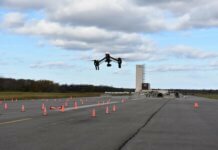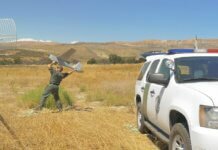As public safety agencies continue to adopt unmanned aircraft systems (UAS), new research from DRONERESPONDERS – a nonprofit supporting the use of drones in public safety – provides a look at how these new programs are developing, as well as a glimpse at the challenges.
In its 2024 Mid-Year Public Safety UAS Report, DRONERESPONDERS lays out the following key findings:
· Three out of four public safety agencies say they are already either operating drones or working on implementing a drone program.
· More than 80% of public safety UAS operators either have obtained, or are pursuing, their Federal Aviation Administration Part 107 certification.
· 82% of public safety agencies with a UAS program are operating multi-rotor systems, while only 11% are using fixed- or delta-wing drones.
· Over 35% of public safety UAS programs are using the FAA’s LAANC system for airspace requests.
The report’s data included survey responses from 288 public safety professionals, combined with insight from DRONERESPONDERS analysts who work with stakeholders within the public safety UAS sector on a regular basis.
“The data represents a clear snapshot illustrating how public safety agencies are adopting drones,” says Gregory Crutsinger, a DRONERESPONDERS analyst and principal at Scholar Farms in Berkeley, Calif. “Our survey sample size provided statistically valid insights that served to benchmark the current state of the sector.”
While conducting the research, DRONERESPONDERS was able to identify challenges still facing public safety UAS operations. Among them were a lack of standardized training and procedures for public safety remote pilots; a need to continue to adopt professional aviation decision-making and risk management standards; improved understanding of operations within the National Airspace System; and greater proficiency at managing UAS data and producing actionable intelligence for incident commanders.
“Effective data management remains a bottleneck for the majority of public safety UAS programs,” says Crutsinger. “Everyone is focused on flying the drone, but they need to understand how to capture accurate data and then convert that imagery into useful tools for on-scene decision-making and post-event analysis.”
DRONERESPONDERS says the 2024 Mid-Year Public Safety UAS Report represents the first in a series of research reports it plans to release.
“We’ll be working with our advisory team and our partners to help define the scope the future research initiatives,” says Charles Werner, director of DRONERESPONDERS. “We will also add additional analysts who have the interest and experience in helping us undertake this important mission for public safety.”










